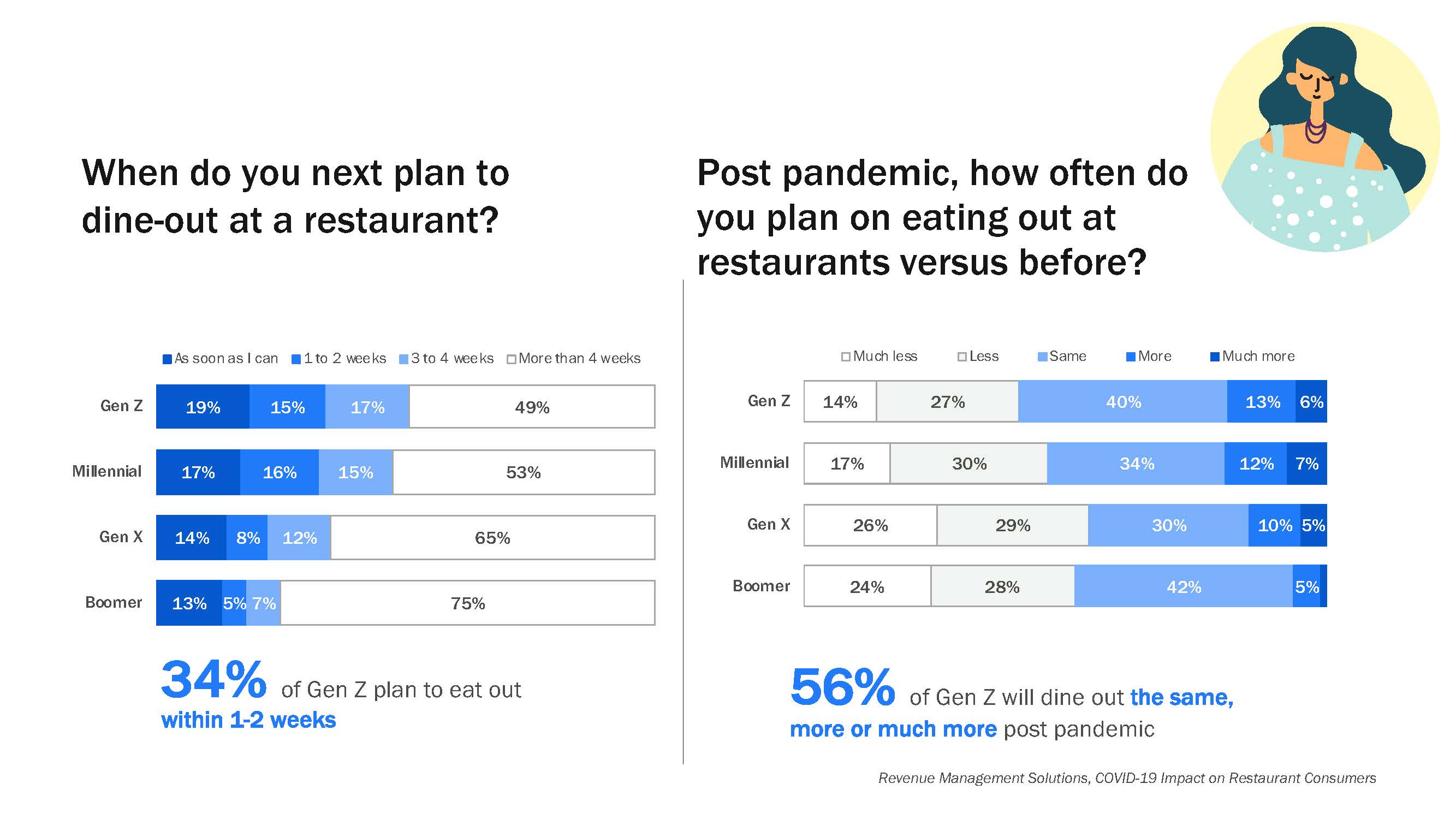Bridging the Generation Gaps: How We Are All Dining Today
3 Min Read By Jana Zschieschang
It turns out Gen Z and the Baby Boomers can now agree on something: the two bookend generations want more take out (and delivery and drive-thru).
Our team at Revenue Management Solutions uncovered these similarities and a few differences in our May survey of 1,200 U.S. consumers, who shared their insights on dining out, what eases their concerns, how much they’re interacting with restaurants now, and how their habits have changed. The outreach was a follow up to an April survey of 1,800 consumers from the UK, US, Singapore, South Korea and Taiwan, and is part of an effort to keep our clients, including about 100,000 restaurant locations in 40 countries, and the industry informed during these times without historic precedence. We have a third survey planned in mid-August.
A Common Thread
Our survey data was broken out by generations, including: Baby Boomers, Gen Xers, Millennials and Gen Zers. Regardless of age, the COVID-19 pandemic forced us to form new habits.

Dining via limited contact channels, as noted above, became ever more popular. Baby Boomers showed the biggest increase since April. The least likely to use takeout, delivery or drive thru pre-COVID, Boomers reported a 35 percent increase in takeout – a 20 ppt jump – a 26 percent increase in drive thru orders and a 15 percent jump in delivery. About 40 percent of Gen Z increased their use of all three channels – a jump of 22 ppt since April. Gen Xers experienced the smallest incremental change, though 30 percent of respondents in that age category reported increasing their overall use. Millennials were already frequent users but did see a slight uptick: use of delivery increased by 7ppt to 39 percent; take out by two ppt to 38 percent and drive thru by four ppt to 34 percent.
WFH = DIY Breakfast
Stopping for a triple shot latte isn’t possible on the commute from the kitchen to the home office, and every generation has changed their breakfast habits as a result. As might be expected, Gen Z reported eating later or skipping breakfast altogether, with 39 percent of the younger set reporting a change in breakfast habits.
Older generations also changed how they eat breakfast, though Gen Xers, Millennials and Boomers cited “eating at home” as the difference. Overall, 40 percent of Millennials reported changing their breakfast habits, followed by 30 percent of Gen Xers and 20 percent of Boomers.
Table for 20 (year-olds)
All of us are proceeding with caution these days, but the younger generations are more likely to make a quick return to dining. More than a third of Gen Zers and Millennials (34 percent and 33 percent) plan to dine out again within one-to-two weeks. Just 18 percent of Boomers and 22 percent of Millennials plan to dine out within the same time frame.
Similarly, the older generations are planning to dine out less post-COVID than the younger generations. More than 50 percent of Boomers and Gen Xers (52 percent an 55 percent) will dine out less or much less than before, compared to 41 percent of Gen Zers and 45 percent of Millennials.
On the flip side, 19 percent of both Gen Zers and Millennials report a desire to dine out more or much more in the future, compared to just 15 percent of Xers and six percent of Boomers.
We have been at home much longer than we thought, but consumers still want to interact with restaurants, just on their terms. Understanding how your target customer feels about post-COVID life allows you and your brand to meet them where they are now, which is likely their own kitchen.
For more on the generational differences related to returning to restaurants, download our July 2020 Update – Generational Insights at https://www.revenuemanage.com/en/lp/insights/covid19-july-part2/.


